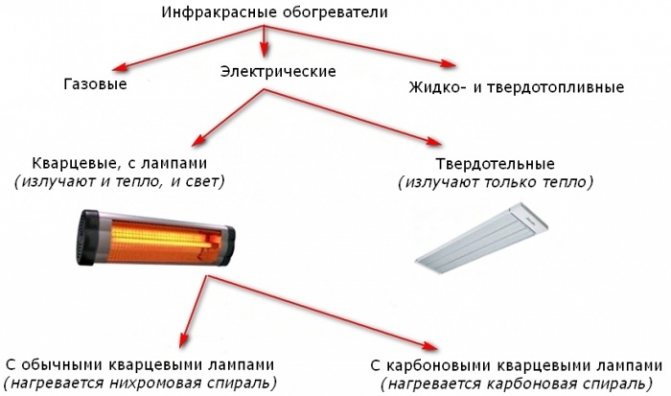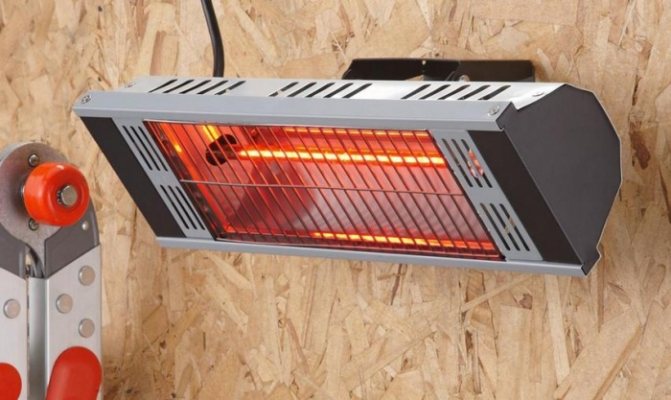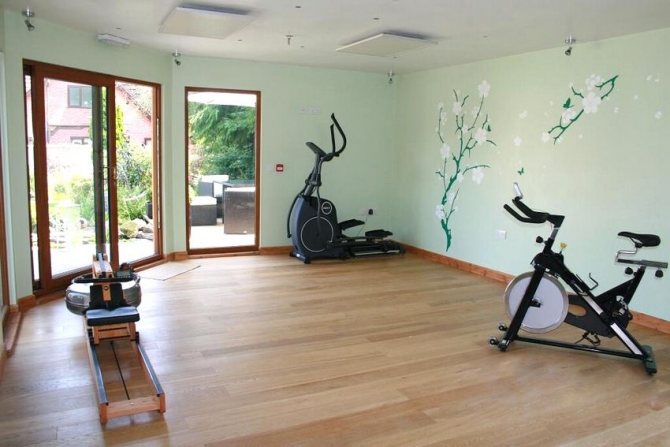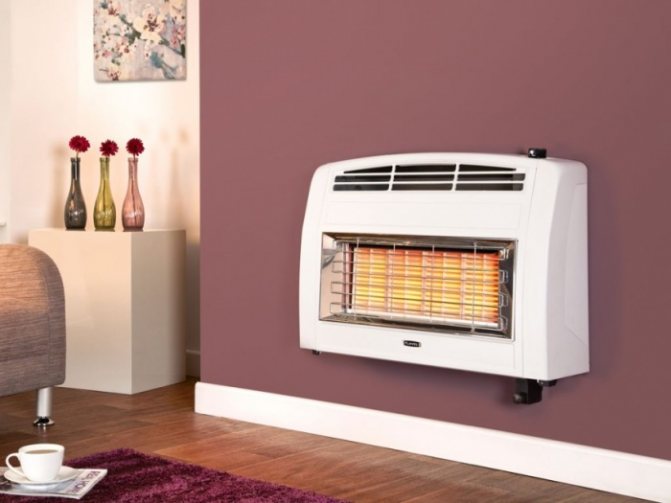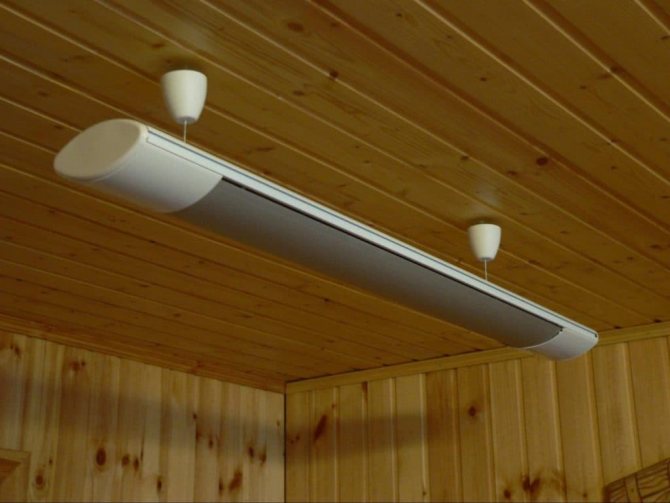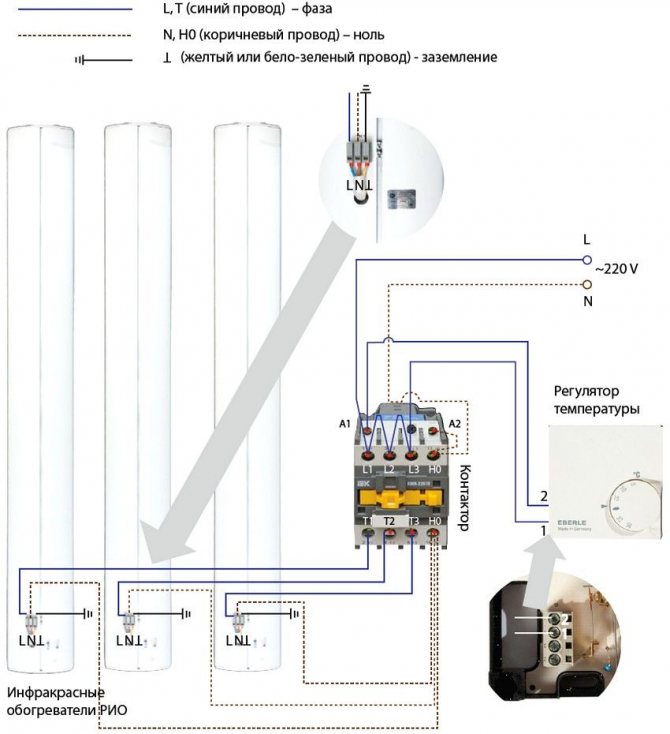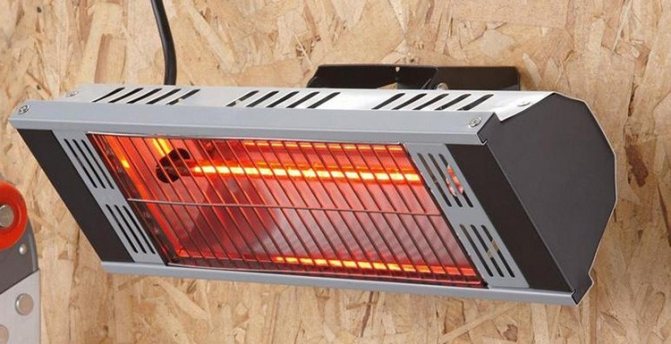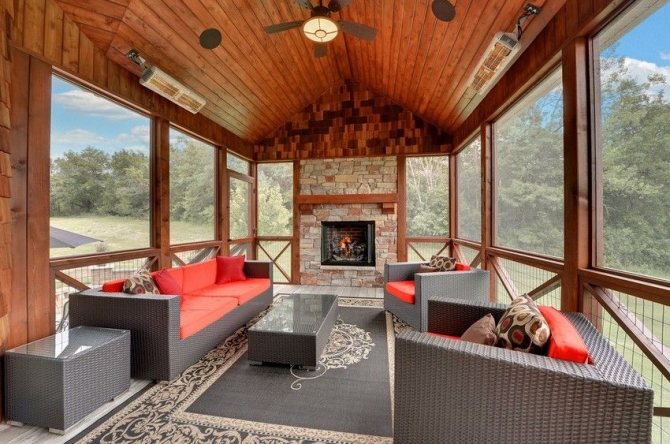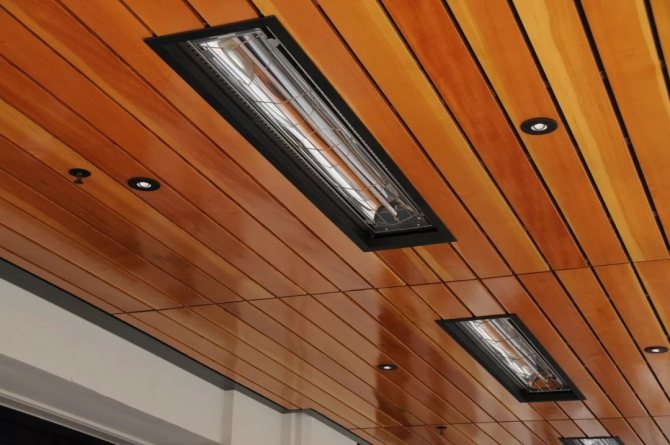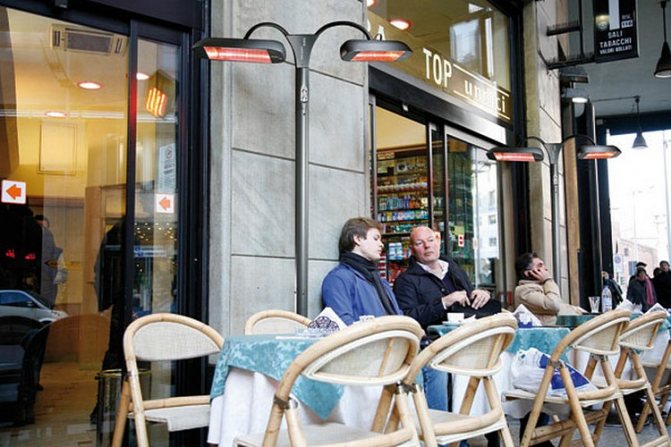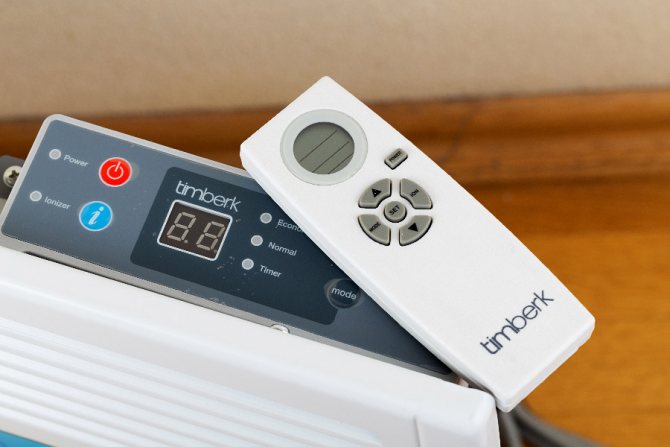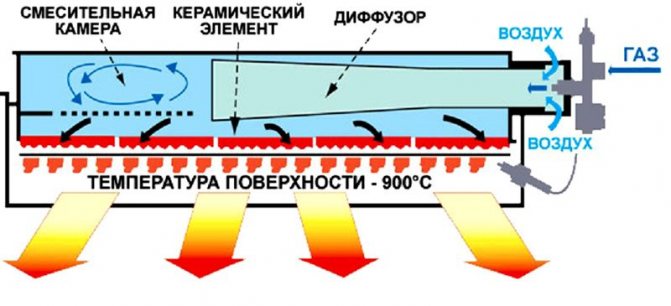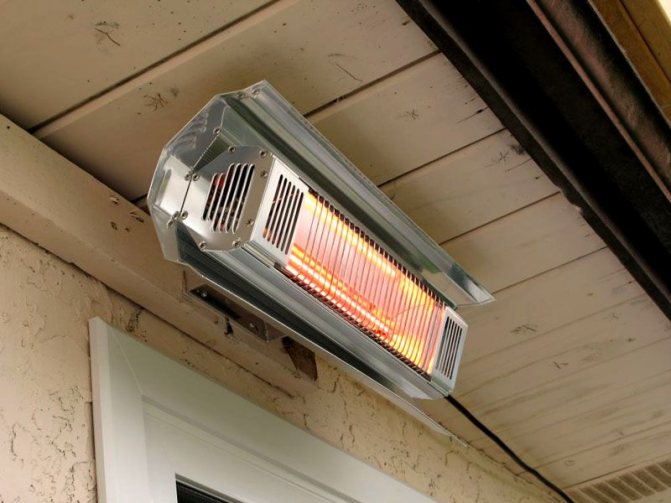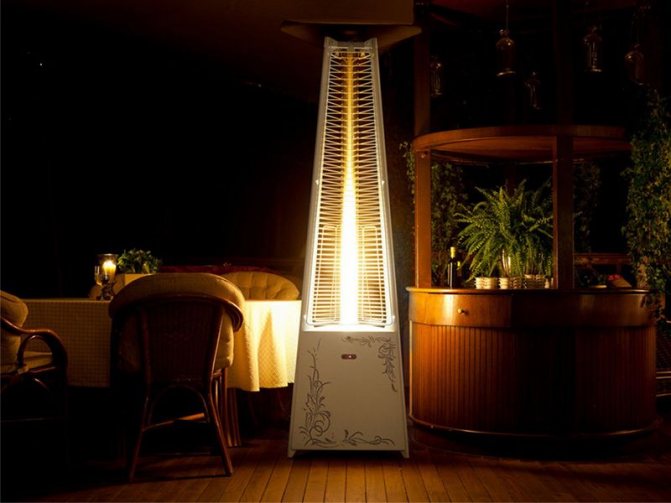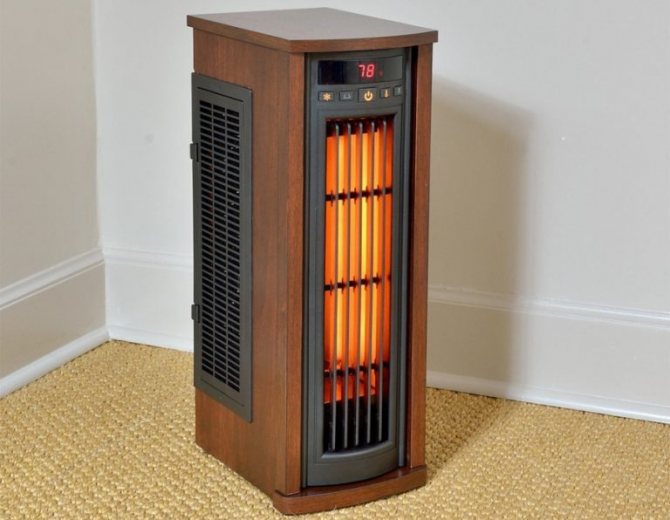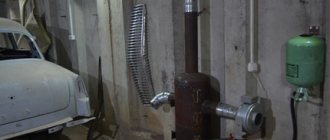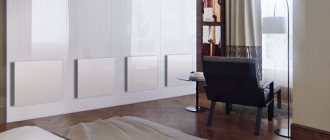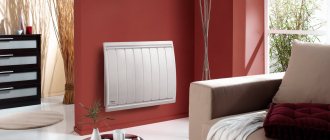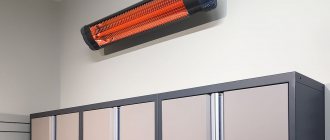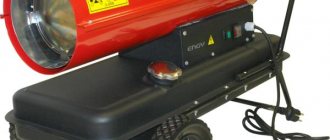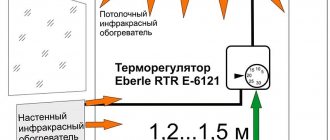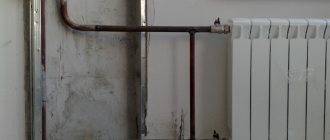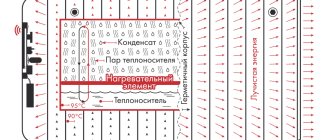Every summer cottage owner wants to be cozy and warm inside a country house in any weather. Stationary heating systems, which include boilers, pipe loops, radiators and underfloor heating, are an excellent option if you plan to live outside the city all year round. But what if the stay in the house is limited only to the summer period? In this case, infrared heaters with a thermostat for a summer residence are the best solution to the problem of heating a country house.
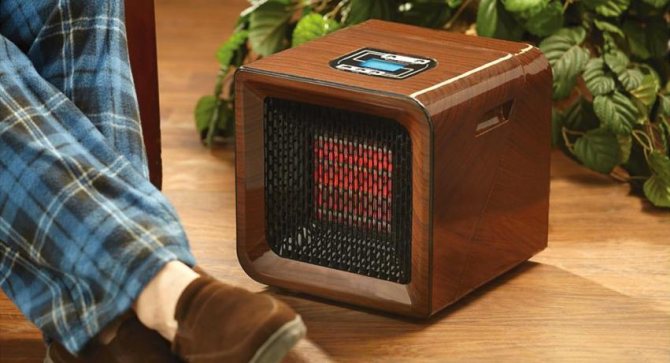
An infrared heater will provide warmth and comfort in a country house
Infrared heaters with a thermostat for a summer residence: the principle of operation
Currently, the market is full of offers and choosing the right option will not be a difficult task. The only thing you need to understand is what the selection criteria are and what you should focus on. First, let's look at how the heating system works, then the device itself, its principle of operation and advantages over classic room heating systems.
If we consider the heating system we are accustomed to, which consists of water circuits and radiators, it is easy to come to the conclusion that heat is transferred into space in three ways:
- direct heat transfer - direct exchange between the surface of the heater and the air around it. This option has a significant drawback - the limited working area of the radiator. It can be increased by increasing the temperature in the system;
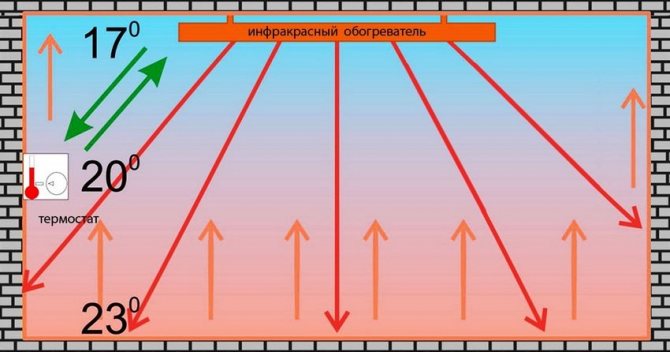

The principle of operation of an infrared heater
- convection is a process directly related to direct heat transfer. The special design of the radiators contributes to the formation of convection air currents, which, when heated to the required temperature, are able to move throughout the entire area of the room. The disadvantages of this option include the fact that warm air moves upward, while the floor and lower level of the room remain cold. Such currents create drafts and carry dust;
- heat radiation also occurs in a classic heating system, however, it is so small that it cannot seriously affect the overall performance. In addition, the area of its distribution is very small.
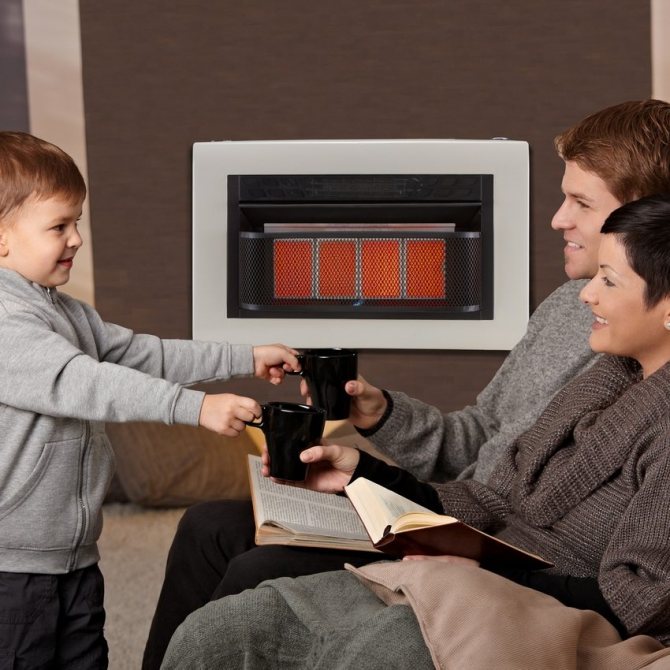

Using an infrared heater is a simple and effective way to maintain a comfortable room temperature
Infrared heaters for summer cottages with a thermostat have a fundamentally different principle of operation. Thanks to electromagnetic waves lying in a certain range, energy is transferred over a distance. This is how solar energy spreads across our planet, heating objects and substances that come across on the way. And they give this heat to the surrounding air. Thus, the principle of operation of this type of heater was borrowed from nature itself.
When using a local "sun" placed absolutely anywhere in the room, furniture, walls, floor and ceiling receive heat, which is then released into the environment, and comfortable conditions are created in the room.
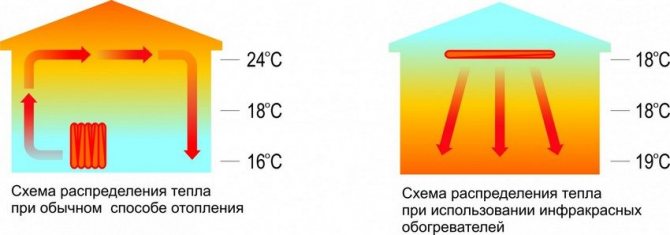

Comparative diagram of temperature distribution for convection heating and in the case of using an infrared heater
Is there a need for a thermostat?
The thermostat is a necessary part. Especially in an infrared heater, which is used for summer cottages. A simpler option independently makes temperature measurements and leads to the required indicators. For example, the average level of a comfortable room temperature is no higher than 22 degrees.
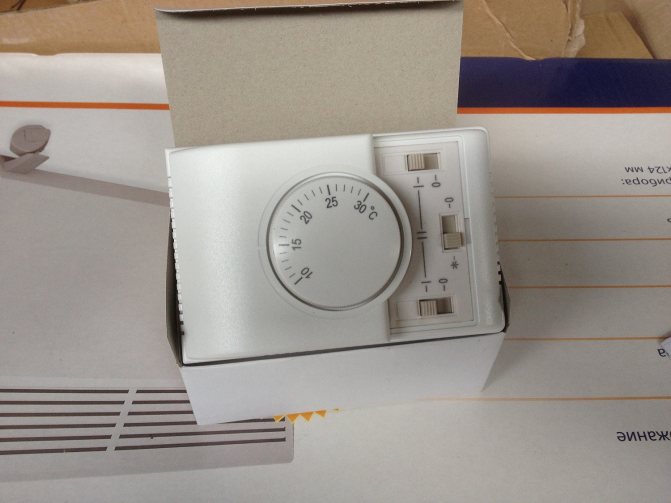

Controlling the temperature regime will not only make your stay in the country more comfortable, but also save on energy resources used for heating. Feedback from real owners confirms that IR heaters are a worthwhile purchase.
Infrared heaters: advantages and disadvantages
At first, you may be surprised by the large price range of infrared heaters. The pros and cons of using such a device in your home will help determine the information below.
Consider the main advantages of this type of heater:
- high heating rate of even very large rooms and a feeling of warming almost immediately after the start of the heater;
- absence of convection flows during heating;
- The efficiency of such devices is almost 100%;
- comfortable air distribution throughout the room: the warmest - near the floor, the coolest - near the ceiling;
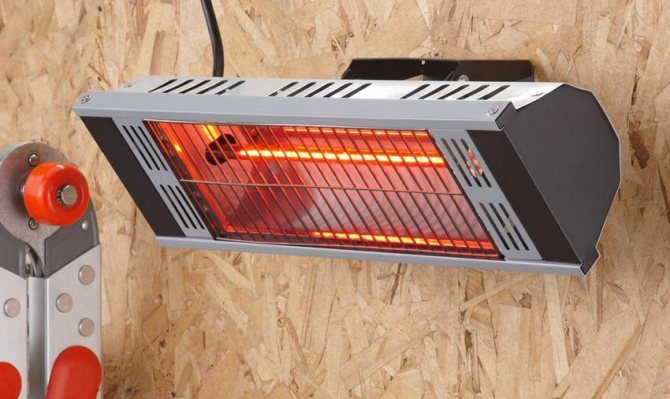

Wall mounted infrared heater
- as a result of the operation of the device, oxygen is not burned, and the natural level of humidity is also maintained;
- infrared heaters are absolutely silent;
- the stylishness and compactness of modern models allow you to choose the option that suits your style for any interior;
- mobility is another significant plus of this type of heaters. You can easily take the device with you or simply rearrange it to a more convenient place for you;
- fire and electrical safety of such devices at the highest level;
- installation and use of the IR heater does not cause any difficulties even for those users who are not very well versed in the operation of electrical appliances.
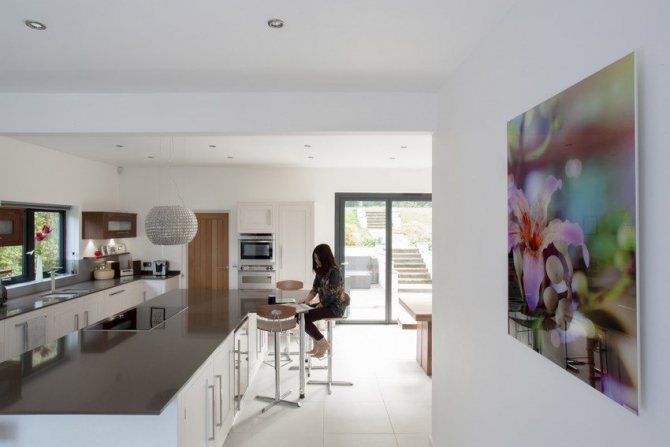

Wall-mounted infrared heater in the form of a picture can become an interior decoration
This type of heating devices is not devoid of disadvantages. For example, zone heating, which, on the one hand, is an advantage, on the other hand, significantly limits the zone of comfortable stay.
You can often find statements about the dangers of infrared heaters. And although, according to all indicators, the effect on the human body of medium and long infrared waves is not dangerous, and sometimes even useful, one cannot exclude the option of an individual allergic reaction. This is manifested by excessive lacrimation and irritability of the mucous membrane of the eyes.
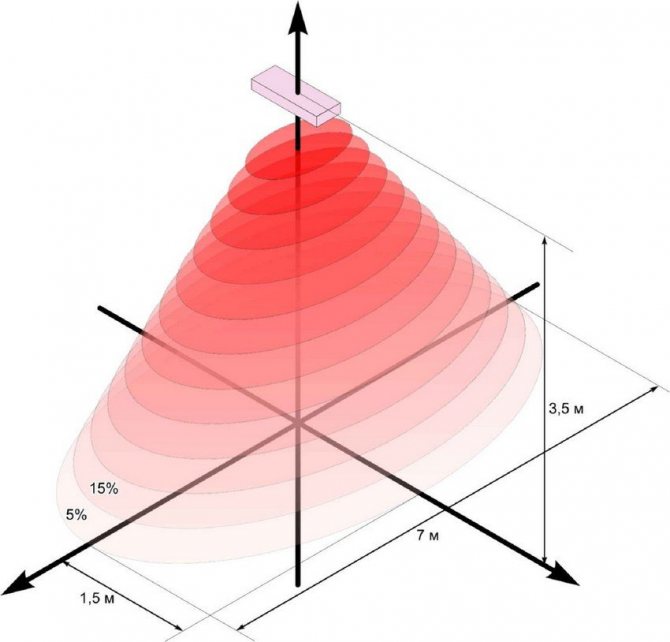

Distribution of heat in the area of operation of the heater
Due to the possible negative consequences of infrared heaters, it is necessary to adhere to all recommendations for installation and operation. The device is never placed in such a way as to act directly on a person, for example, over a bed. Before buying, be sure to think about where and how you will place the heater.
If you have previously noticed any signs of radiation intolerance or are simply worried that infrared heaters are unhealthy, be sure to consult with your doctor first.
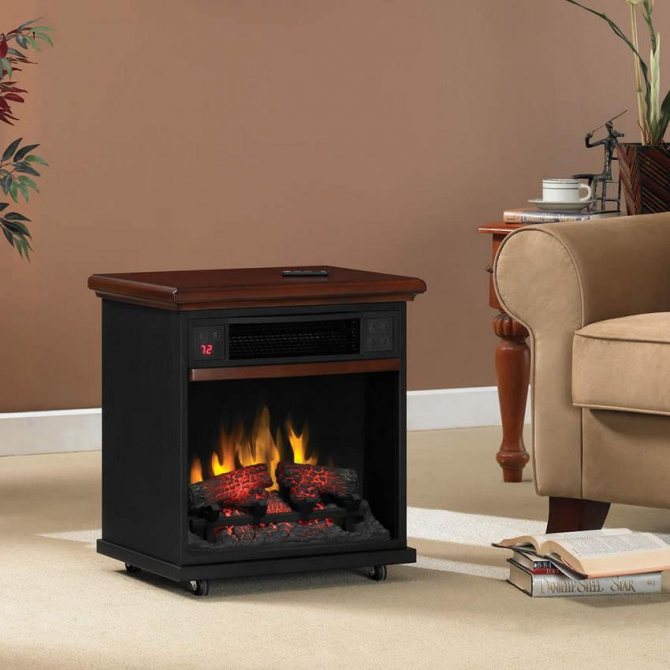

Floor standing model of infrared heater
Pros and cons
Among the advantages of an IR heater, it is worth noting:
- fast warming up of objects and people in the room;
- profitability (according to the latest research, an infrared heater consumes on average 20% less energy than a standard electric one);
- offline mode;
- does not make noise;
- creates the effect of "warm floor";
- you can adjust the heating area;
- can be effectively used in a semi-open space (for example, on a terrace or in a gazebo);
- does not dry the air;
- the heat that the infrared heater gives is spread from top to bottom, so there will be no unnecessary waste of energy to warm up the air near the ceiling;
- safety and reliability of the design.
The device also has a number of disadvantages:
- high price;
- there is a risk of damaging the varnish coating on walls and furniture due to their direct heating;
- there is a certain health risk.
Let's dwell on the last point in more detail. Infrared radiation can heat up the body unevenly if the person is standing or sitting sideways to the heater. This leads to active evaporation of fluid and dehydration of the body, dry skin. If, moreover, the heater is set at high power, then there is a risk of getting even a burn.
So that the IR heater does not harm your health, you need to select the device and its mode of operation in exact accordance with the parameters of the room. For example, you should not take a powerful apparatus into a small room in the hope of quickly warming it up
It is equally important to correctly position the heater. It should be as far away from the person as possible, heat only furniture and interior
Never place the infrared heater near your head. This can lead to migraines.
Varieties of infrared heaters
The range of infrared heaters on the market is so large that it will not be difficult to choose a device for absolutely any operating conditions. But in order to make the right choice, you need to understand at least a little about the specifics and classification of the goods.
Depending on the degree of radiation intensity, infrared heaters can be divided into three groups:
- shortwave with a wavelength range from 0.74 to 2.5 microns are the most powerful devices. For safety reasons, such heaters are not used in residential areas or even in shops or shopping centers. The scope of their application is large-scale industrial or public premises: train stations, production workshops, warehouses. The use of some models is permissible to create comfortable recreation areas on the summer grounds of restaurants or cafes;
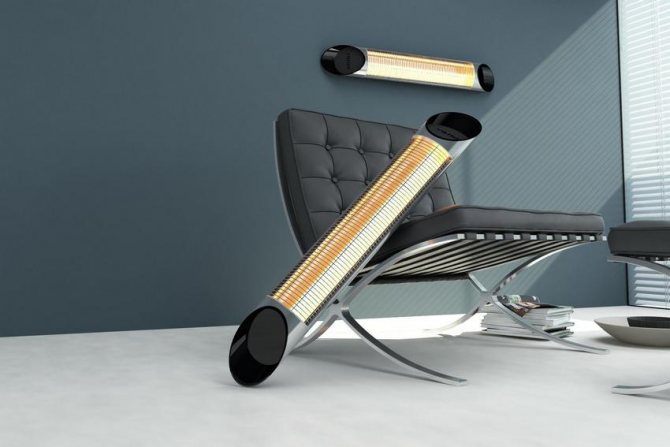

Currently, the heating equipment market offers a wide range of infrared heaters
- medium-wave devices occupy an intermediate position and emit waves from 2.5 to 50 microns. The use of such heaters is allowed everywhere, including in public places and residential premises;
- long-wave heaters (from 50 to 1000 microns) are the safest option in all respects. In these models, the emitter is not heated to excessively high temperatures, which makes its operation almost invisible. And the radiation itself in this range is not only not considered dangerous, but on the contrary - it has a beneficial effect on the human body. Due to hygiene standards, long wave heaters can be used in hospitals and kindergartens.
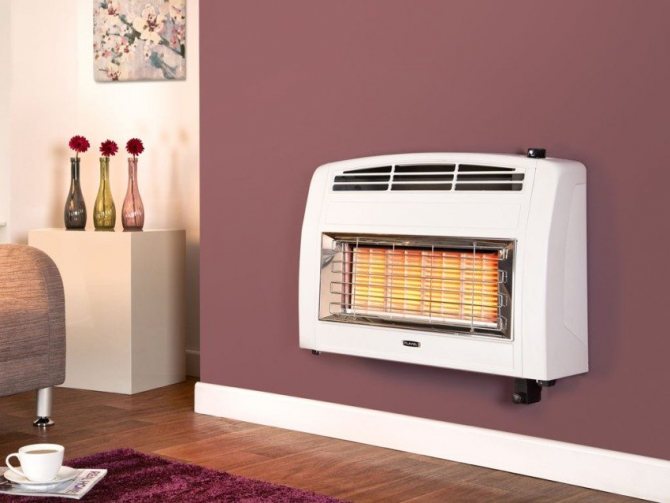

Infrared heaters are gaining in popularity every year.
Also, IR heaters are divided into groups depending on the energy carrier used:
- diesel heaters, for the operation of which the process of burning liquid fuel is required. If we talk about choosing an infrared heater with a thermostat for a summer residence, this option is not considered at all. Firstly, it is unsafe, and secondly, the unpleasant smell of diesel fuel will not add comfort to your life;
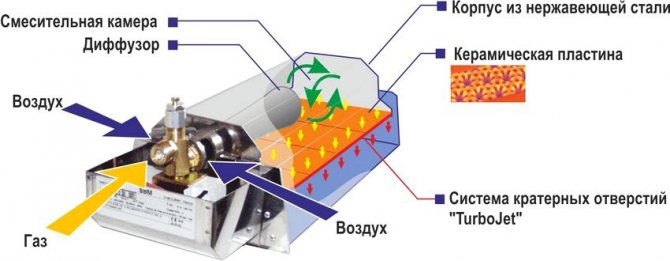

Diagram of a gas infrared heater device
- gas models are sometimes used to heat living quarters or outbuildings. For such devices to work, they must be connected to LPG cylinders. To use these heaters, a good ventilation system is required, as well as constant monitoring of their operation. Despite its high efficiency, this option is still not optimal for use in the country, as it hides many dangers;
- electric heaters are the most common option today.Such devices consist of an infrared radiation source and an aluminum or steel reflector, which provides heat transfer in the desired direction. This type of heater is often spherical or parabolic.
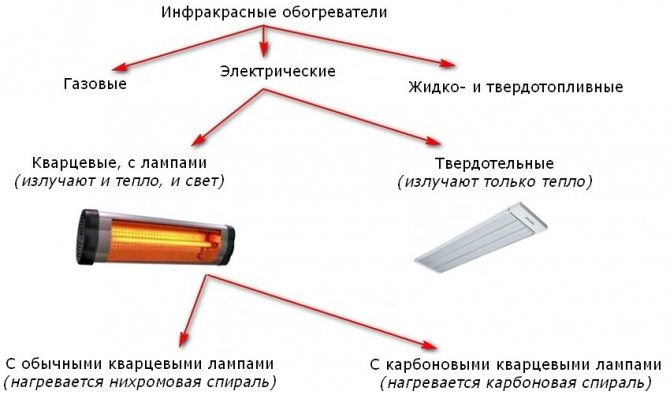

Electric heaters are the most common and safest option for heating a summer cottage
In turn, electric heaters are divided into several types:
- halogen;
- carbon;
- glass;
- ceramic.
How to choose an infrared heater and what to look for
Of course, as in any heater, the power of the device plays the main role. But here, along with it, it is necessary to pay attention to such a parameter as wavelength. Now let's try to understand what it is. There are three types:
- Longwave - such devices are not used in apartments and country houses. Such heaters are widely used in industrial workshops and premises, at airports and train stations,
- Medium wave - the most optimal option for living quarters than the previous one,
- Shortwave - ideal heaters for summer cottages, which do not harm the body at all.
Very important! No matter how harmless the device is, you should not look at it for a long time - the cornea of the eye is very delicate and it is quite possible to get it burned. You should also pay attention to the individual intolerance of the body to infrared radiation. This also happens, although quite rarely.
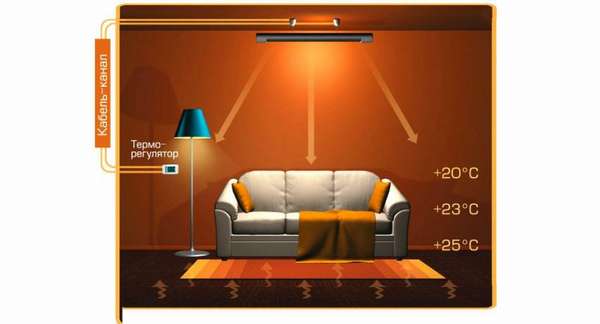

Well, in order to calculate the required power of the heater by the area of the room, you can use the online calculator.
Calculator for calculating the required power of an electric heater
Criteria for choosing infrared heaters for summer cottages
Perhaps one of the most important criteria for choosing a heater is how it is installed. Given this characteristic, the following types of heating devices can be distinguished:
- floor;
- ceiling;
- wall.
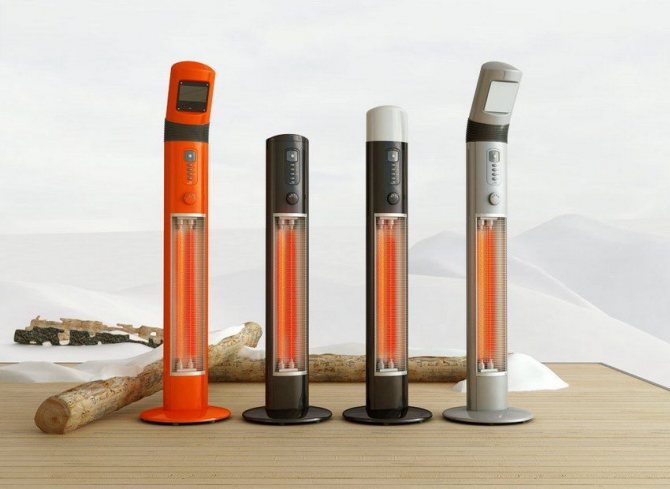

Floor standing infrared heaters are highly mobile
Floor heaters are the lightest and most mobile option. They can be easily carried, rearranged and even transported with you if necessary. The only drawback of such models is the very limited area of influence. The choice of underfloor heaters is quite large. They can be either with vertical or horizontal arrangement of the IR emitter, which can also have a variety of shapes. The device can be placed directly on the floor or have a special stand or platform.
Ceiling infrared heaters with a thermostat are the second most popular. Their main advantage is a convenient location, which allows not only to additionally free up space in the room, but also to cover the maximum area for heating.
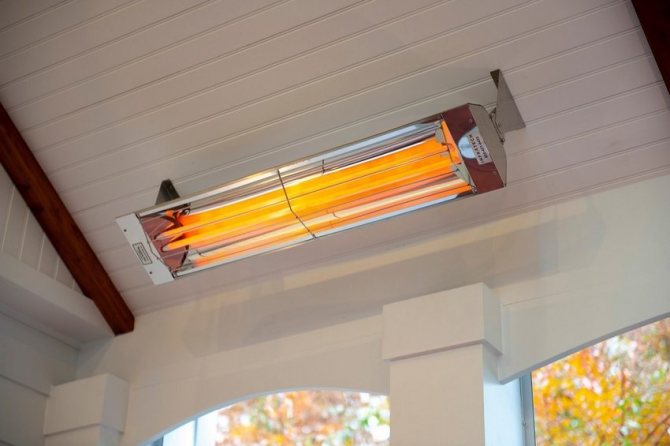

Ceiling models do not clutter up the space and allow you to cover the maximum area for heating
Today you can buy an infrared ceiling heater with a thermostat, which will perfectly fit into the design of the room, since many models are similar to lamps. Moreover, options are available even for suspended ceilings. The dimensions of such heaters are 600x600 mm, which allows them to be ideally placed in a standard ceiling cell.
Wall mounted infrared heaters are often flat rectangular panels that do not clutter up the space. If you choose the right place for their location, they are able to cover a considerable area.
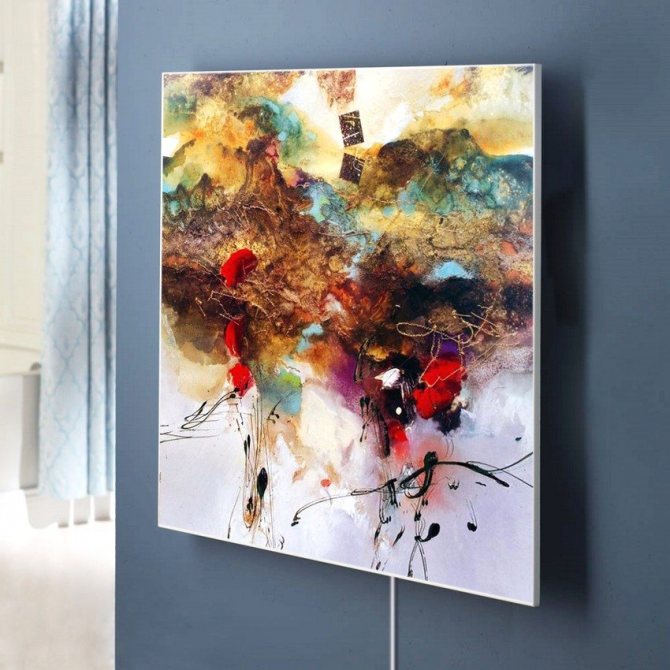

Flat wall heater with unique design
What is a thermostat in an infrared heating system for?
It is the thermostat for the infrared heater that helps maintain the set temperature. In addition, it will allow owners to save energy.The device heats up to the set temperature, after which an automatic shutdown occurs. When the temperature drops, the thermostat will turn on the heating again. In this rhythm, he will constantly maintain a given mode.
If the heater is not equipped with a thermostat, the owners will have to manually turn the device on and off, which is some inconvenience.
The thermostat does not affect the operation of the device, an infrared heater equally heats rooms without it.
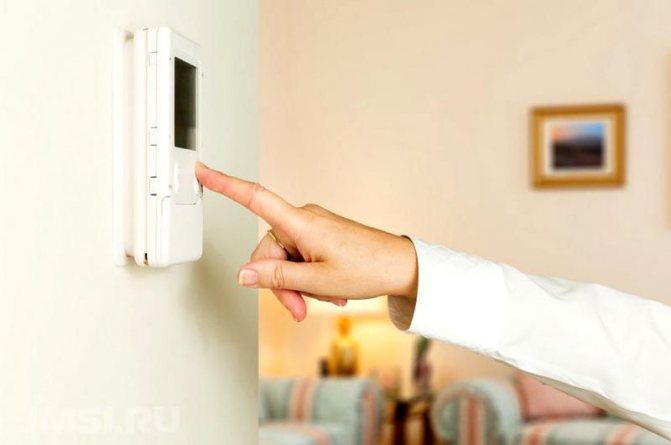

The use of a thermostat will provide a comfortable temperature regime and energy savings
Advantages of a heater with a thermostat
- profitability. You can make simple calculations. With the help of the thermostat, the device turns off when the set temperature mark is reached. Switching on will occur only after a significant decrease in the temperature norm. Thus, the total working time is reduced to 13 hours a day, which halves energy consumption;
- comfortable operation. It is only necessary to set the temperature parameters once, the rest of the heater will be performed by itself in automatic mode. You can even leave the cottage and leave the device in working mode. Upon return, the microclimate will be comfortable and cozy;
- a heater with a thermostat is absolutely safe, there is no overheating, the sensor automatically turns off the equipment;
- the infrared heater is completely silent. The moments of turning off and turning on the device are not audible to others.
Manufacturers offer devices with different heating temperatures. For summer cottages, the use of low-temperature heaters with a maximum temperature of up to 60 ° C is recommended.
Which thermostat is the most functional?
The thermostat is classified according to the control principle into the following types.
step - the connection of the infrared heater through the thermostat occurs sequentially. All heating elements are switched on in turn. It depends on the temperature of the room. The most inexpensive device, it does not have an automatic shutdown function when the set heating temperature is reached;
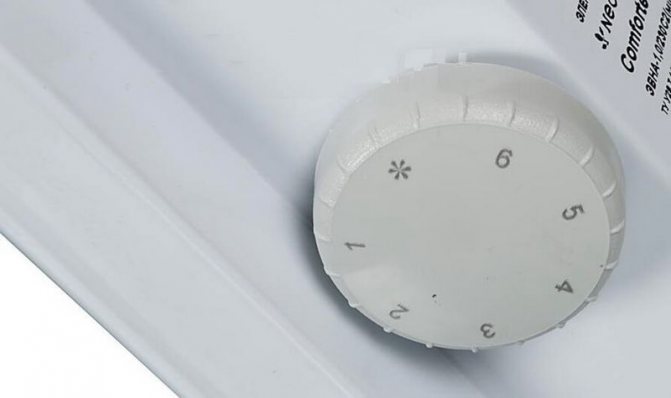

Step thermostat
mechanical control - it is possible to regulate temperature indicators and automatic shutdown. However, the mechanical thermostat cannot maintain the temperature regime;
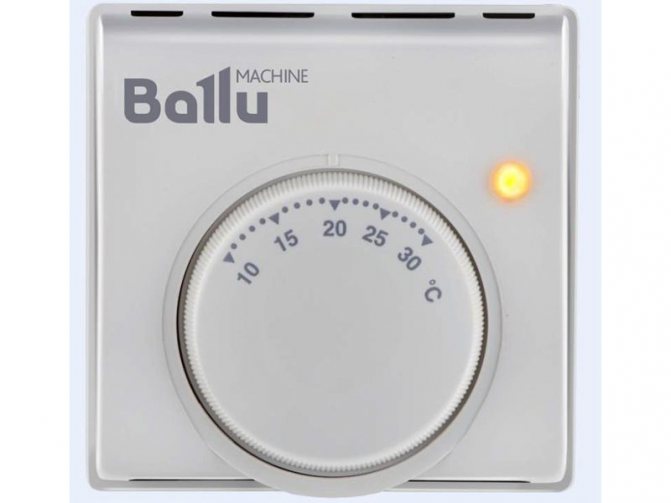

Mechanical thermostat
electronic control - a thermostat in combination with a thermostat maintains automatically set temperature values. Manufacturers offer mobile units that can be easily dismantled from the heater. The scheme for connecting thermostats to infrared heaters with electronic control is supplemented with the function of automatic standby, switching off and on the device, and support for temperature indicators. In addition, it is possible to install an electronic board, which displays all the set values of the equipment. This is a very convenient and safe option for a country house;
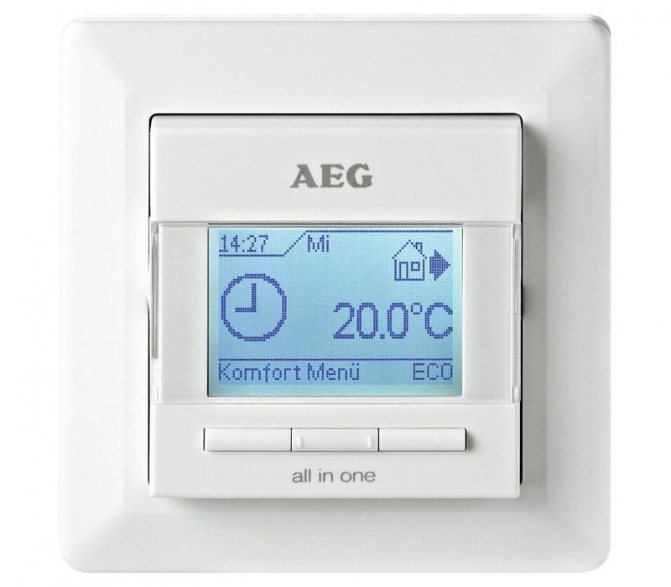

Electronic device
- remote control. Technical characteristics are no different from electronic control. The modern model offers remote control. It is possible to connect the device to the general automatic control of the house. The remote control will independently determine the need to turn on and off the heater. The choice of such management remains with the owner of the country house;
- smart thermostat. Control is displayed on mobile equipment in the form of an application to a phone or tablet. The cost of such equipment is much higher than a simple device.
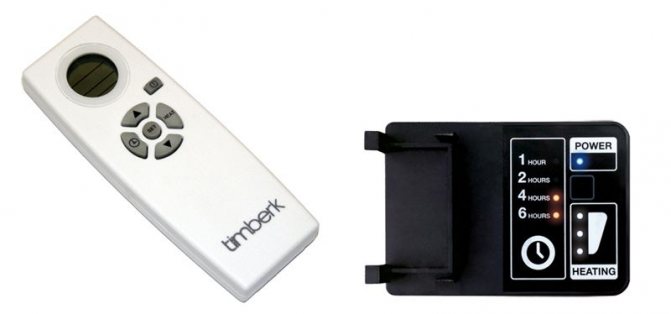

Remote control unit
According to the type of installation, thermostats are external and internal. For the internal one does not require additional electrical wiring, everything is arranged in the heater case.However, there is a possibility of early triggering of the shutdown mode, since the thermostat does not always objectively assess the temperature regime of the room, taking the temperature around the device as the main one.
Some electrical engineering knowledge is required to install an external thermostat. Only with proper installation, the maintenance of the temperature regime will be uniform over the entire area of the room.
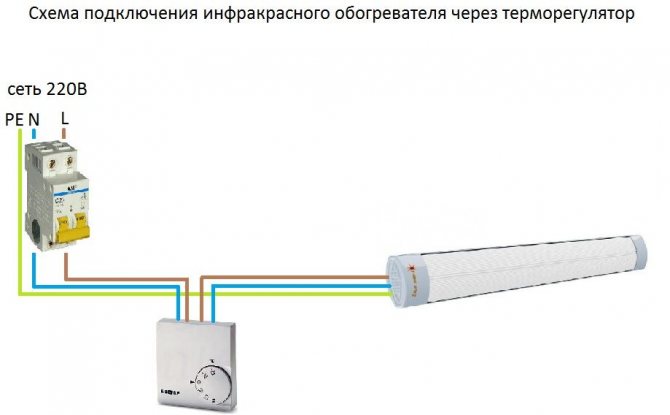

Wiring diagram for an infrared heater through a thermostat
Thermoregulators for an IR heater: principle of operation and connection features
In order for the heater to maintain the required temperature regime, as well as in order to maximally secure the operation of the device, a thermostat is used, it is also a thermostat. It happens that your chosen model does not have a built-in thermostat. Then it is worth considering the option of buying and installing a thermostat separately.
What is it for? Receiving a signal from the air temperature sensor, the thermostat turns on or off the heating system. As the temperature rises, the resistance of the sensor drops. It can only go down to a certain level, after which the thermostat turns on and opens the circuit. Then the thermostat cools down. When the lower temperature mark is reached, the sensor turns on the system again. This principle of operation is the same for all devices, regardless of the type and manufacturer.
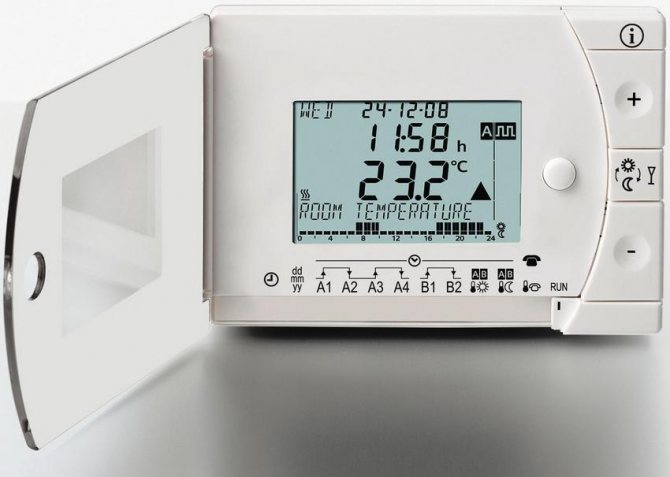

Thermoregulator for infrared heater
Types of thermostats:
- 300-1200 degrees Celsius - high temperature;
- 60-500 degrees Celsius - medium temperature;
- up to 60 degrees Celsius - low temperature.
Depending on the design, thermostats are divided into two types:
- Simple - mechanical or electromechanical devices. The main advantage of this type is its low cost. The disadvantage is the limited accuracy of temperature control. All the necessary parameters are indicated on a special scale, and mode switching is carried out using a button and a lever.
- Complex - fully electronic models that can be programmed. In this case, control and switching of modes is carried out using the touch screen or buttons.
- the location of the device should be at a height of no more than one and a half meters;
- it is imperative to lay a layer of insulation under the thermostat in order to avoid incorrect readings of the device due to the contact of its surface with a cold wall;
- one regulator is used for one room;
- for safety reasons, avoid touching the device with surrounding objects;
- the power of the thermostat must match the power of the heater.
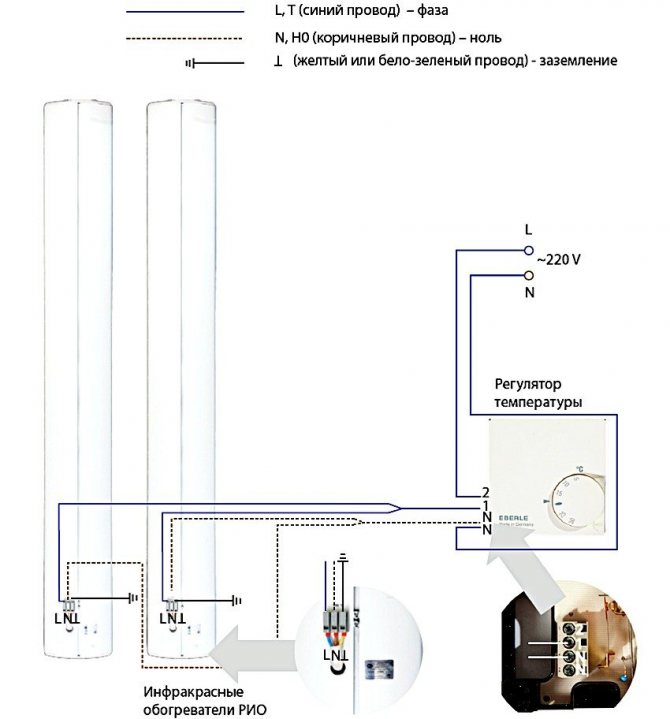

Wiring diagram for two infrared heaters to the thermostat
Features of connecting the thermostat to an infrared heater:
If we talk about the method of installation, thermostats can be divided into open and hidden.
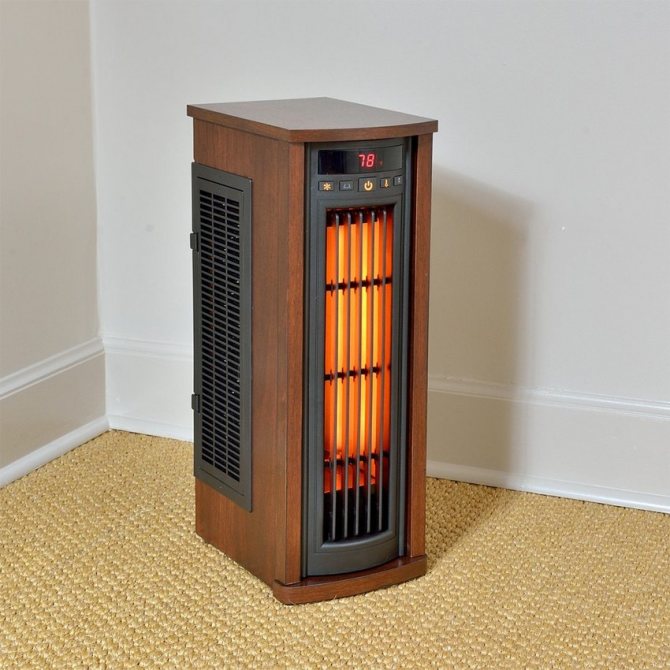

Floor-standing version of the infrared heater for summer cottages
The principle of operation of thermostats
So, both devices from experience are equipped with thermostats. In an oil heater, the element measured the temperature near the radiator. In the case of an infrared lamp, the principle is different. The thermostat is supplied in a separate housing and measures the temperature at the point of installation. An infrared heater hangs from the ceiling and the temperature is measured, say, near the door. This fundamentally changes the matter.
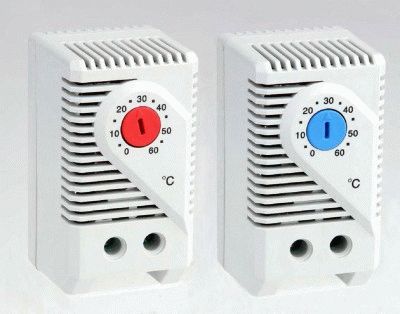

Consider the points that are not so obvious at first glance:
- Everyone understands that you cannot maintain the anti-freeze temperature in the house with oil heaters. This is simply pointless, the devices are not endowed with great flexibility in terms of thermal conditions. In this sense, the thermostat of an infrared heater is much more accurate, capable of performing complex work.
- Leaving a bunch of oil heaters in the house is simply dangerous, a fire is possible. This comes from the fact: the radiator heats up, and then it transfers heat to the air.This is potentially dangerous, there are electrical wires inside the device. The infrared wall heater works differently. A discharge occurs inside the lamp, the energy is carried away by radiation quanta. The device itself does not heat up. It is not the air that receives the heat, but the surrounding objects. Hanging the infrared heater from the ceiling increases the floor temperature.
It looks amazing. Especially in an industrial setting. An infrared heater hangs high, and the body feels warm, as if the sun is shining overhead. Energy is transferred not by convection of air masses, but by radiation, to which the distance is not an obstacle.
Let's introduce the third item in the previous list. The efficiency of infrared heaters is higher than that of oil heaters:
- The money spent on company accounts will be less.
- The electrics in the house will not heat up that much.
In light of the above, it turns out that infrared heaters have proven the convenience of the automatic temperature maintenance method.
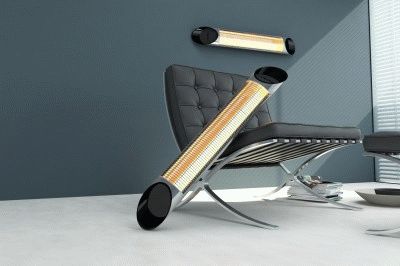

Veito carbon wall heater
How to choose an energy-saving home heater yourself
Before moving on to choosing an IR heater for your home, it is recommended to carefully study the offers on the market, as well as read the reviews. Which heater is best for a summer residence is an ambiguous question. Much depends on the living conditions and individual requirements. Consider the main parameters of the device most suitable for use in a country house:
An important addition to an infrared heater is a thermostat, which will allow you to control the degree of heating of the device and set the desired temperature.
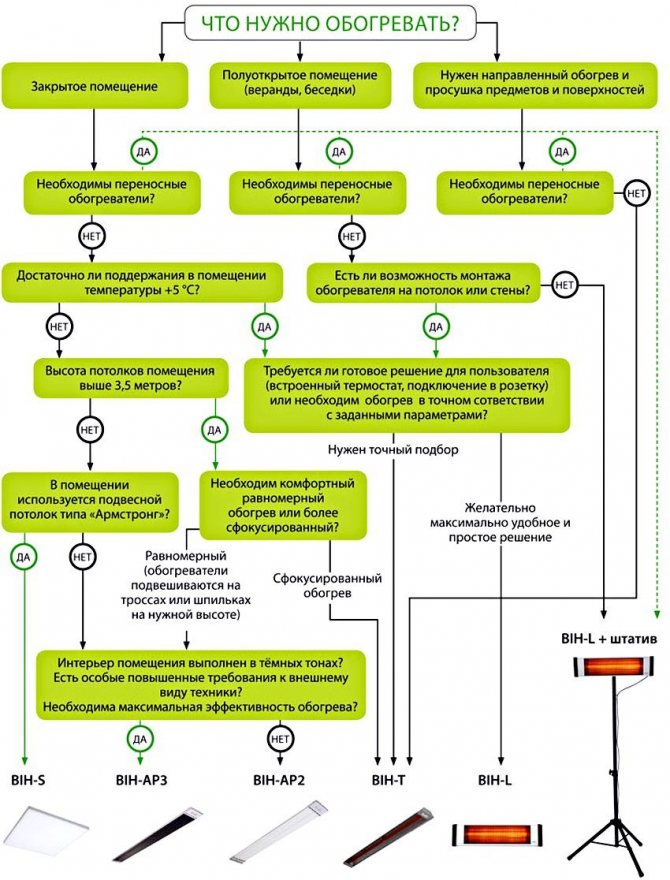

The choice of an infrared heater depends on living conditions and individual requirements
Control of the most modern models can include a smooth adjustment of the heating power, as well as an automatic thermostat that will turn off the device when the required room temperature is reached.
Moreover, a considerable number of modern models have remote control. The most convenient option is to connect the heater to the climate control system. How necessary these functions are in a summer residence is up to you.


IR heater in the form of a flat panel in the interior
When choosing an energy efficient home heater, also pay attention to the following points:
- the heater should not be too large and take up too much space;
- be sure to pay attention to the weight of the structure when it comes to purchasing a ceiling infrared heater with a thermostat. Customer reviews argue that for such devices, suspension parts must be included in the kit, otherwise the ceiling may not withstand such a load. Do not forget that the heater should not be located directly above the sleeping or working place;
- another important nuance when choosing an IR heater is the presence of protection against short circuits, overheating or falling of the device;
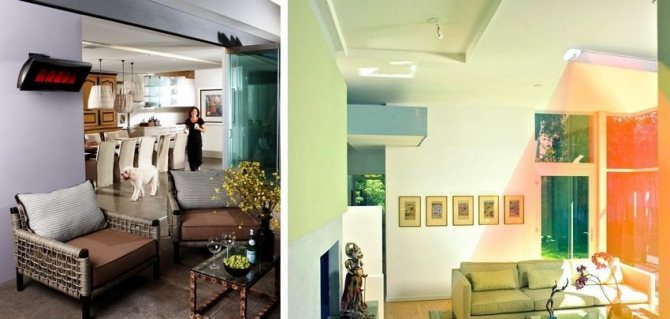

Various types of infrared heaters
- the last but one of the main selection criteria is the quality of the IR heater. Now you can find a lot of cheap devices from unknown manufacturers. Don't buy them! Not only because it will most likely be a waste of money and such a device will not last long. The heater is a rather dangerous device in itself and its unscrupulous assembly can cost you dearly. Prefer factory-certified certified merchandise available in store.
As an example, consider several of the most popular models of well-known manufacturers:
| Characteristics and features of the device | Dimensions, mm | Weight, kg | price, rub. |
| BALLU BIH-L-2.0 | |||
| 740x180x90 | 3,5 | from 2600 |
| NeoClima NC-IRHLS-2.0 | |||
| 1065x145x236 | 15 | from 3800 |
| Vitesse VS-870 | |||
| 150x150x1000 | 4 | from 3700 |
| Thermik S-0.7 | |||
| 690x400x50 | 3 | from 2500 |
| Almac IR-5 | |||
| 730x160x39 | 1,8 | from 2600 |
| Dome OIM-2 | |||
| 1648x275x43 | 9,4 | from 4000 |
| Master HALL 1500 | |||
| 540x320x250 | 4,8 | from 14500 |
| Noirot Royat 2 1200 | |||
| 120x450x110 | 1 | from 7500 |
| IkoLine IKO-08 | |||
| 1000x160x40 | 3,2 | from 2890 |
| Ballu BIGH-4 | |||
| 338x278x372 | 2,3 | from 3100 |
Separation of devices by power supply or what may be required for its operation
According to this parameter, such devices can be divided into two types - these are infrared heaters for summer cottages, powered by electricity and liquefied gas.
If we consider such devices from the point of view of safety, then electrical appliances are more reliable, but they also have drawbacks. After all, if the heater is quite powerful, then the wiring may need to be replaced or modernized, which is also quite inconvenient. But it is better to try to consider these types in more detail, and only after that draw any conclusions.
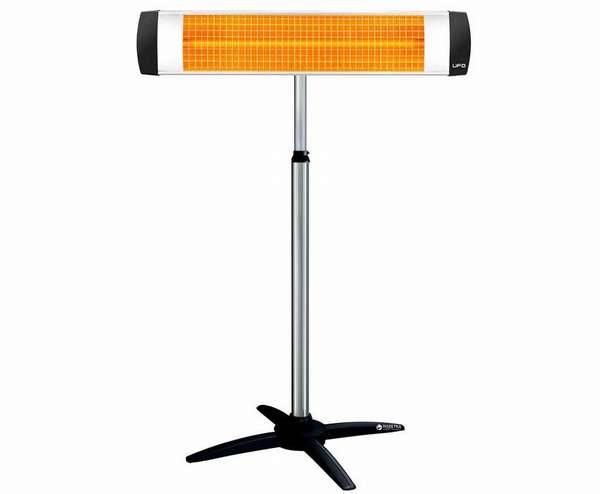

Electric infrared heaters and their characteristics
Such devices are quite convenient in terms of connection. All they need is a 220V socket. However, it is worth noting that it is necessary to first check the condition of the electrical wiring, provided that the cottage is not new. Although, even if the power grid of the house is in poor condition, there is always an option to extend a new line directly from the switchboard. We will definitely tell you how to do this in the upcoming articles.
Electric heaters for summer cottages, especially if they are not stationary, are very convenient in terms of transportation. When leaving for the winter, they can always be loaded into the car. Fortunately, some models are quite compact.
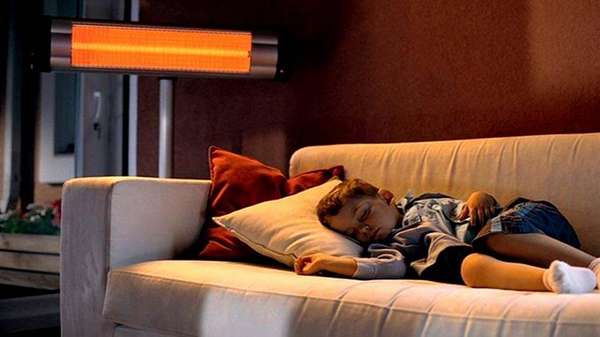

There is another interesting point. Many people come to the summer cottage with small children. And here we can note a rather important advantage, for example, of a wall-mounted infrared electric heater for summer cottages over a conventional oil heater. In order not to be unfounded, we will give one example. On one of the fairly well-known sites, there is a review of an electric infrared heater in exactly this aspect:
The guest. January 13, 2020:Good day! Maybe my review will help someone in choosing a wall heater! I got it at the beginning of winter, while I'm happy! The main plus, which I noted for myself, is that the device hangs on the wall, and my little daughter cannot reach it! It used to be oily and my daughter constantly bumped against it and pressed all the buttons in a row! Our room where it hangs is not very big, so it's warm! The heating radius is three meters! And I also forgot to write that, in comparison with oil, the wall one is quite economical, I realized this when the electricity bill came.
More details on Review: https://ru.otzyv.com/infrakrasnye-obogrevateli/review-272300
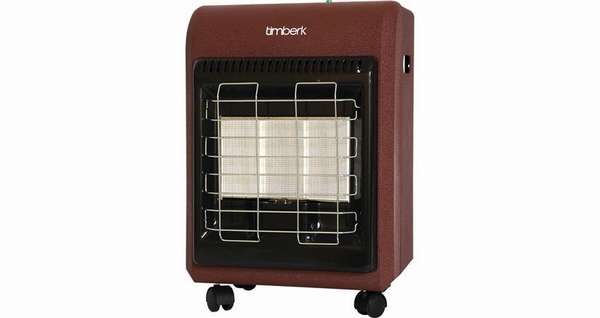

Features of a gas heater for a summer residence with a cylinder: the pros and cons of the device
A rather significant advantage of such a device is the low cost of fuel, which it consumes more than economically. This type of infrared heaters can be both with external gas equipment (in this case, it is quite compact), and with built-in. In addition, there are differences in the heating element. Here the division is as follows:
- "Light" heater - here the combustion of fuel takes place, as it were, outside. The flame heats up the ceramic plates, which emit a glow both in the range visible to the human eye and in the infrared.
- "Dark" in such a device, gas combustion occurs inside a special tube. Thus, the light familiar to our eye is practically not emitted.
If we talk about safety, then the ceramic infrared gas heater, of course, is slightly lower. But don't think he's dangerous. After all, the manufacturer follows all the rules and regulations. And in our time, the control of any equipment is quite strict. This means that any of the types and types is acceptable for use in country houses.
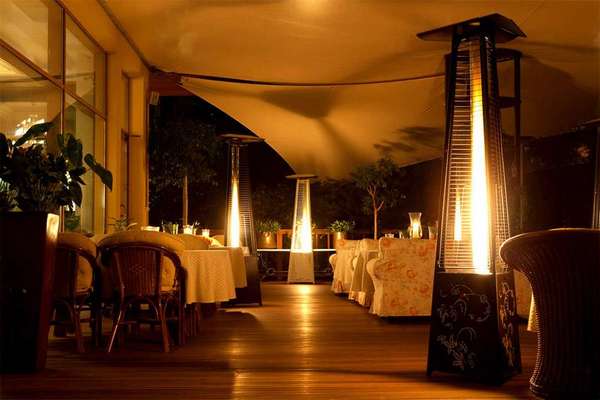

You can buy a gas heater for a summer residence at a price of 500 to 150,000 rubles. Let the dear reader not be confused by such a huge price range. The fact is that there are a lot of types and types of such equipment, as well as degrees of security. That is why it is worth very carefully considering the purpose of its acquisition, the necessary options and location, before deciding on something.
Using infrared heaters for greenhouses
Another area of application for infrared heaters, which cannot be ignored, is heating greenhouses. As a rule, devices with low power are used for this, which can be conveniently mounted depending on the needs of the grown plants. Statistics show that using a properly selected model can increase germination rates by 30-40%.
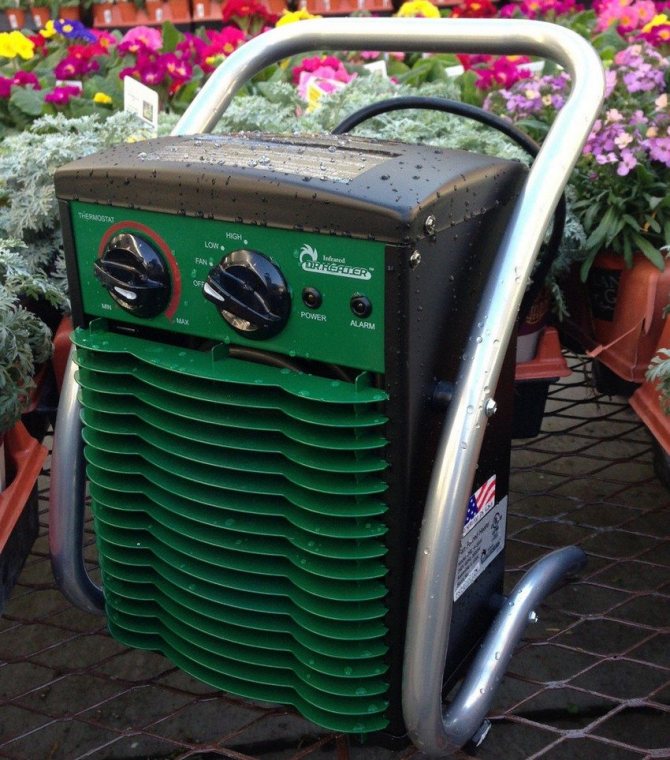

Greenhouse infrared heater
A distinctive feature of this heating method is the transfer of heat directly from the carrier to the soil or to the seedlings. In this case, energy is not expended on heating the air - it heats up already from the warm soil. This makes the system economical and affordable to operate.
Summing up, we can say that infrared heaters are a worthy competitor for classic heating systems, which is not inferior to them in terms of efficiency. At the same time, the cost of such devices is much lower; they can be easily transported and installed anywhere in the room. Therefore, thinking about the heating system in the country, you can seriously consider infrared heaters as an alternative option.
Warm infrared floors
Film warm floors have long and firmly entered the life of people. They are an excellent alternative to water heating with a gas or solid fuel boiler connection. A thermostat for an infrared floor is not necessary if people live in the country all year round, but you should be prepared that such heating will cost a pretty penny, since you will have to turn it off and on manually, which causes an overconsumption of electricity.
As practice shows, the most economical are digital thermostats for infrared floors, although they are quite expensive. This is due to the fact that they are able to save up to 70% of the electricity during floor operation.
Electronic thermostats are very popular with consumers, which are sold at an average price, but at the same time they can be remotely controlled and work in several rooms at once, if the device is multichannel.
Mechanical thermostats are the cheapest on the market and require manual adjustment, but if there is someone in the country all the time, then they are quite suitable for adjusting the infrared floor.
As a rule, thermostats with a remote sensor are used for underfloor heating. The working part of the device is installed between the heating elements of the film, and the sensor with the display is mounted on the wall.
Depending on the type of infrared heater, an air temperature regulator is matched to it. The simplest, but at the same time reliable and effective is the thermostat in the socket. On the reverse side, it has a plug, and on the front side - a socket into which the heater is connected, and a display or a knob-regulator.
When choosing a thermostat for an infrared heater, you need to take into account the power of the latter. It should not exceed the capacity of the controller.
Conventional mechanical devices operate from the mains, while electronic and digital counterparts operate on simple or rechargeable batteries, which need to be periodically changed or recharged.
Ceiling infrared electric heaters: thermostat selection
The price of an IR heater with a thermostat will be higher than devices without a built-in thermostat. But keep in mind that purchasing a thermostat separately can be compared to the price of the heater itself. At the same time, everything depends on the manufacturer of the device and its complexity, therefore there are also budget models on the market. If you decide to purchase a thermostat separately, you should know what characteristics to pay attention to.
Types of thermostats and their features:
| Thermostat type | Features of the |
| Mechanical thermostat with timer |
|
| Electronic thermostat with the ability to manually adjust the temperature |
|
| "Smart" rheostat |
|

